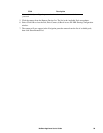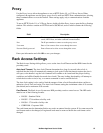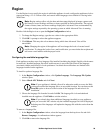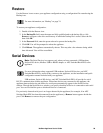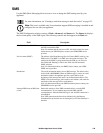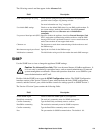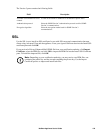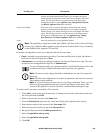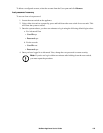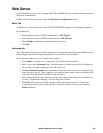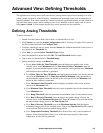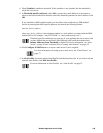
101NetBotz Appliance User’s Guide
The following controls and data appear in the Advanced tab:
SNMP
Use the SNMP icon to view or change the appliance SNMP settings.
Caution: For Advanced Users Only! This is an advanced feature of NetBotz appliances. It
is for use only by technically experienced users, such as network administrators or network
systems management coordinators. Please refer questions about how to use SNMP to your
network administration and IT staff.
Double-click the SNMP icon to open the SNMP Configuration window. The SNMP Configuration
interface consists of the Version 1/Version 2 pane, which includes the basic SNMP configuration
controls; and the Version 3 pane, which includes controls for settings specific to SNMP Version 3.
The Version 1/Version 2 pane contains the following fields:
Field Description
Send debug messages to syslog When checked, debug messages are forwarded to the syslog host
specified in the Configure Log Settings window.
For more information see “Log” on page 86.
Use default SMS settings Check to use the default SMS values for your SMS-capable modem. To
use custom settings, uncheck this checkbox, check Use protocol
descriptor unit, and enter Character set and Initialization
commands.
Use protocol descriptor unit (PDU) Specifies whether the appliance should use Protocol Descriptor Unit
(PDU) mode when communicating with the modem to send the SMS
message. PDU mode is preferred because it is more versatile than text
mode. Some modems do not support both modes.
Character set The character set used when communicating with the modem to send
the SMS message.
Maximum message bytes allowed Specify the size limit for the SMS message.
Initialization commands The initialization string used for the modem that sends SMS messages.
Field Description
Enable SNMP Agent Check to enable the SNMP agent on your appliance.
Read-Only community The read-only community name for SNMP read requests.
Confirm community Type the Read-Only community name to confirm.
Read/Write community The read/write community name for SNMP set requests.
Confirm community Type the Read/Write community name to confirm.
Port The port number for SNMP communications. The default is 161.






